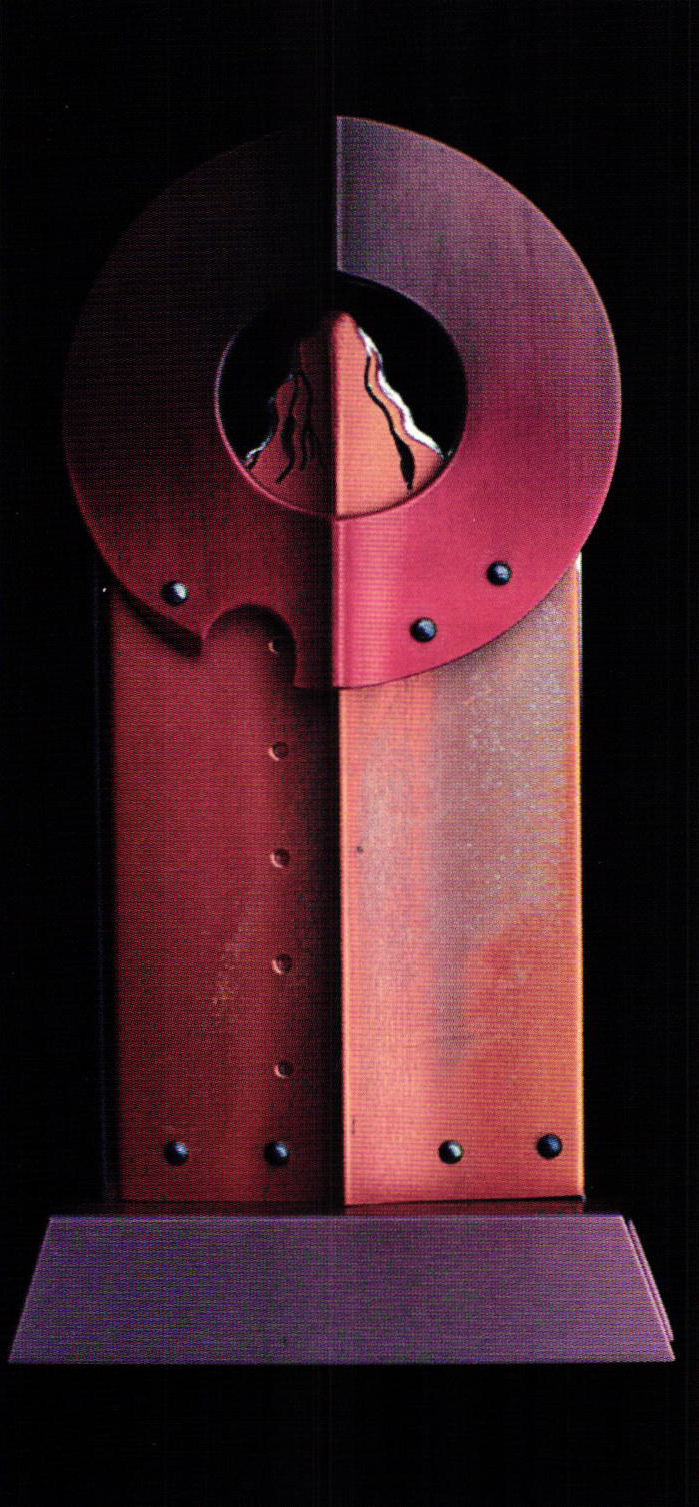Art and Technics: Color
2 Minute Read
Unless you've been living in a cave for the past five years, you are aware of the current interest in color among metalsmiths and jewelers. From the lichen-green of a copper patina blue to the hot red of anodized aluminum, color is in. Of course, the colors of traditional smithing in gold and silver offer a rich surface palette whose subtlety of range cajoles only the most discerning eye. But this new stuff, now we're talking color.
The interest in color has brought with it a new technology. Or, more correctly, new applications of what is in many cases a young technology. Articles in Metalsmith and other magazines have given advice on building or buying the proper equipment. Books have been published, workshops have been taught, visiting artists have given demonstrations and graduate theses have been written. Whole businesses such as Reactive Metals Studio and Met-L-Art have been created to serve the growing appetite for color.
Now, we must ask ourselves if our esthetics have kept pace with our technique. Or, as I'd like to phrase it, if our definition of technique is broad enough to encourage our growth in esthetics.
It's a rare metals student who has a strong foundation in color theory, or for that matter, a rare metalsmith with the ability to teach it. And yet—to state the obvious—an understanding of color is as important as knowing the correct voltage. We seem to address the latter well and the former not at all. It is this disparity I'd like to address.
Most of us use the word technique to refer to the nuts and bolts issues of making things, interplay of tools, materials and hands. It can usually be spoken of in objective term; and lends itself to easy communication. "Waht gauge metal did you use?" "Which joint did you solder first?" This is the language of technique.
Talk of form, scale, surface, function, on the other hand, is usually lumped under esthetics. There's nothing wrong with that, it is simply a convention and a convenience. The problem appears, however, when in practice the two categories drift apart or are considered hierarchical rather than complementary. The current use of color is dramatic evidence of this unfortunate split.
How many out there can color reactive metals? Raise your hands. OK, hands down. Now, how many can discuss color intelligently for more than five minutes, raise your hands. That's what I thought, not many. And it's not your fault. It is the nature of our field to emphasize technique at the expense of esthetics. There's just so much to learn. But the fact is we must make an effort to keep the two linked together. In teching the use of the anodizer, we should teach color theory as well. When teaching ourselves, we should read Albers along with Seeley.
My dictionary defines technique as "the systematic procedure by which a complex task is accomplished." if the goal is to make metal blue, then knowing the correct current is sufficient. But if the thing to be "accomplished" is the creation of unique object of quality and worth, then technique must expand to include all the information needed to realize this special purpose.
Tim McCreight, who writes this column regularly, is a metalsmith, author and head of the Metals Department of the Portland School of Art in Maine.
You assume all responsibility and risk for the use of the safety resources available on or through this web page. The International Gem Society LLC does not assume any liability for the materials, information and opinions provided on, or available through, this web page. No advice or information provided by this website shall create any warranty. Reliance on such advice, information or the content of this web page is solely at your own risk, including without limitation any safety guidelines, resources or precautions, or any other information related to safety that may be available on or through this web page. The International Gem Society LLC disclaims any liability for injury, death or damages resulting from the use thereof.
The All-In-One Jewelry Making Solution At Your Fingertips
When you join the Ganoksin community, you get the tools you need to take your work to the next level.
Trusted Jewelry Making Information & Techniques
Sign up to receive the latest articles, techniques, and inspirations with our free newsletter.
